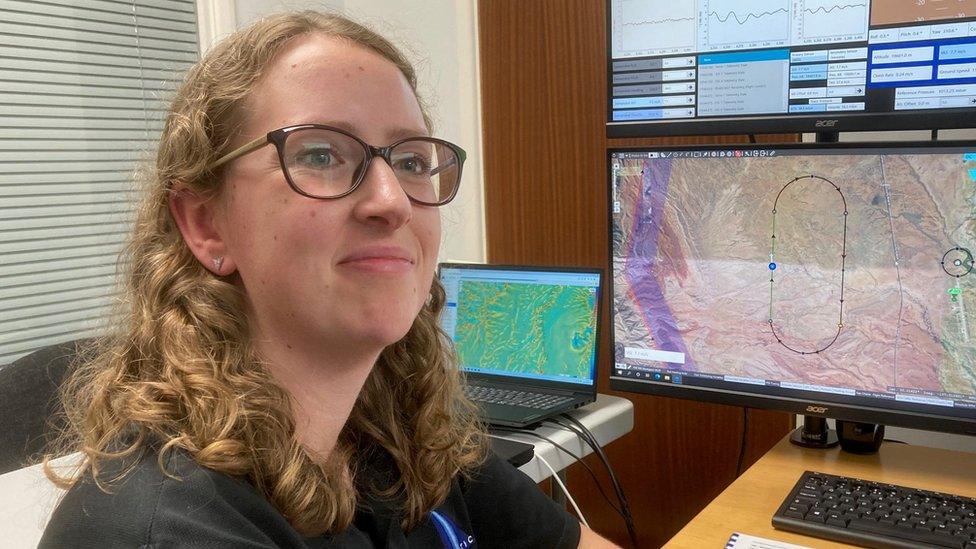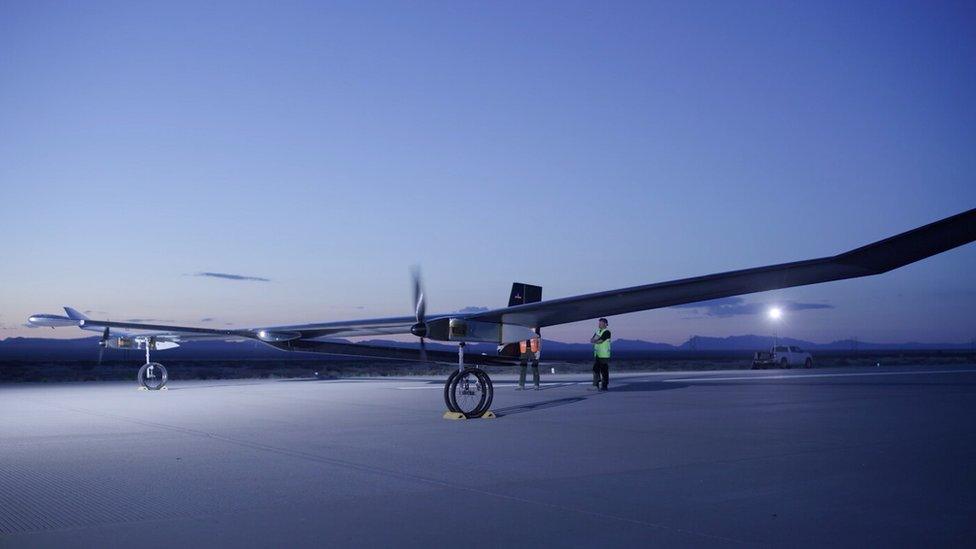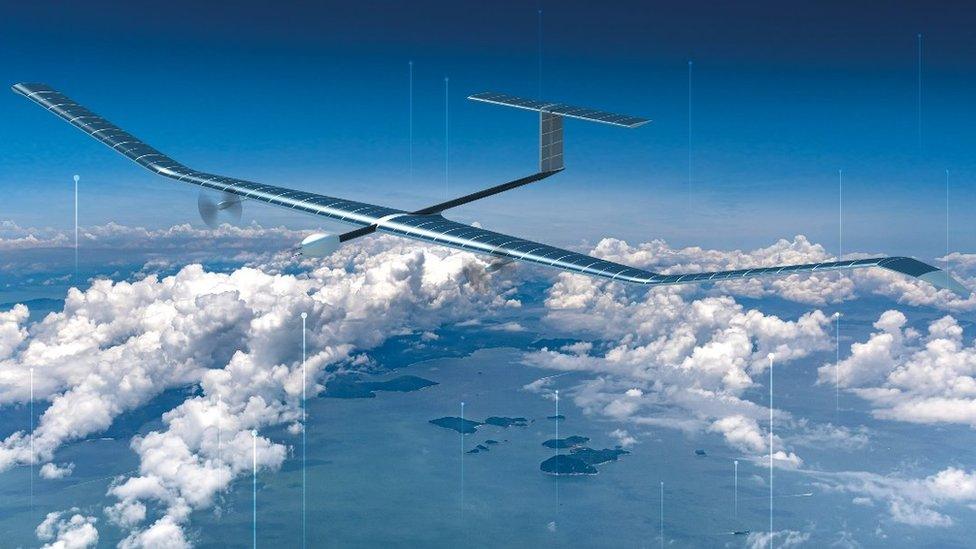Stratosphere test flight for Hampshire-designed solar plane
- Published
The Phasa-35 weighs the same as a motorbike and is powered by the sun
A solar-powered aircraft has successfully completed its first high-altitude flight into the stratosphere.
The unmanned Phasa-35 has the wingspan of an airliner and is intended for surveillance and communications use.
The plane, developed and designed by Alton-based Prismatic in Hampshire, climbed above 66,000ft (20,000m) during the test flight.
Prismatic CEO Dave Corfield said the team had "done something absolutely fantastic".
"I think people are amazed that a small company like this in Alton can come up with this level of technology. It's an aviation first," he said.

Ellie Bates said the test flight was a "massive achievement" for the team
The name - Phasa-35 - is short for Persistent High Altitude Solar Aircraft and refers to its 35-metre (115ft) wingspan.
Prismatic says it weighs just 150kg (24 stone), the same as a standard motorbike, and can remain airborne for up to a year.
The high-altitude flight, which lasted 24 hours, took off from Spaceport America in New Mexico last month.
Avionics system engineer Ellie Bates, who was part of the mission crew, said: "It was quite emotional. It was really exciting to see it and the fact that it went above and beyond what we were expecting was a massive achievement."

The 24-hour stratospheric test flight took off from Spaceport America
Prismatic, which has 60 staff, took just two years to design and build the solar-electric aircraft before its maiden flight in 2020.
The company was acquired by BAE Systems in 2019 and has worked with the Met Office, Piran Composites and battery developer Amprius, among others, to make its vision a reality.
Mission crew member Ben Hilton said: "People have spent years of their lives putting everything they can into getting this thing airworthy."
During daylight hours, solar panels power the electric motors and simultaneously charge the batteries that keep it flying through the night.
It is designed to bridge the gap between conventional aircraft and expensive space satellites, providing a platform for military and civilian surveillance and communications.
The company says its next step is to build more aircraft and continue flight trials with the aim of breaking altitude records.

Follow BBC South on Facebook, external, Twitter, external, or Instagram, external. Send your story ideas to south.newsonline@bbc.co.uk, external.
- Published12 July 2022
